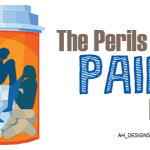
arloo / SHUTTERSTOCK.COM
SAN DIEGO—During a session at the ACR/ARHP 2017 Annual Meeting Nov. 3–8, three representatives from the federal government described several of the government’s varied national strategies and agencies that are tackling pain. All of these strategies are affected by the current national epidemic of opioid overdoses and the need for safer analgesic prescribing. But the government representatives also addressed the need for balancing the risks of analgesic prescribing with patients’ need to have their physicians manage their pain.
Asked whether the government viewed the issue primarily as an opioid problem or a pain problem, Linda Porter, PhD, director of the Office of Pain Policy in the National Institute of Neurological Disorders and Stroke in Bethesda, Md., responded, “We’ve tried to highlight this as a dual problem. You should see that pain management and treatment clearly are part of the government’s plan for the opioid crisis,” she said, although the epidemic of opioid overdose deaths must be urgently addressed.
“We recognize the cost of pain at the individual level and the societal level,” Dr. Porter said. “We have an opioid problem, and we have a pain problem, and we believe there’s a need to develop new pain therapies.” There are also pain modalities that could help but aren’t in use or covered, and we need more professional education to help medical trainees better understand chronic pain as well.
Dr. Porter cited the Institute of Medicine’s 2011 report, Relieving Pain in America, which first called for a coordinated, comprehensive national effort of public and private organizations to transform our understanding and treatment of pain. Data from the 2012 National Health Interview Survey (NHIS) show an estimated 25.3 million adults suffered pain every day for the preceding three months, and nearly 14 million adults experienced severe pain levels.1,2
The Office of the Assistant Secretary for Health at the Department of Health and Human Services (DHHS) helped drive the current National Pain Strategy, released March 18, 2016. “The National Pain Strategy is the government’s first broad-ranging effort to improve how pain is perceived, assessed and treated. It’s a significant step toward the ideal state of pain care,” said Vanila M. Singh, MD, MACM, chief medical officer in the Office of the Assistant Secretary in the DHHS in Washington, D.C. The National Pain Strategy is a coordinated plan for reducing the burden of chronic pain, which affects millions of Americans at significant economic cost.



